Engagement through Advocacy
Improving Education in Chicago with Authoritative Journalism
In 2007, Catalyst, a news magazine focused on Chicago education issues, reported that many pre-school children were staying at home and leaving empty seats available at nearby schools.
Catalyst did what more traditional news outlets would not: It tried to solve the problem.
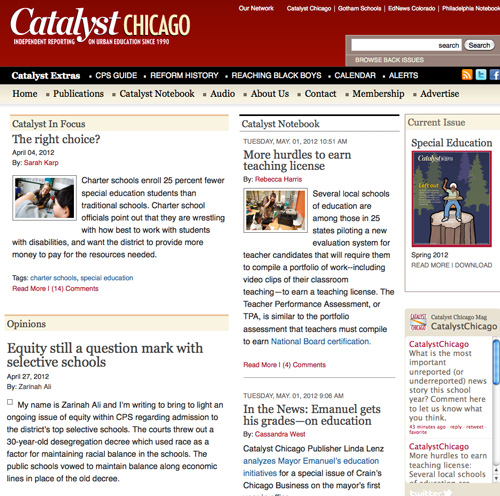 “In Englewood and West Englewood, there are nearly enough slots (1,323) to serve the estimated 1,500 3- and 4-year-olds who live there,” the story said. “Yet filling those slots has proven difficult, and outreach workers are now canvassing homes to determine why, as well as to get an accurate count of how many children are now in pre-school.”
“In Englewood and West Englewood, there are nearly enough slots (1,323) to serve the estimated 1,500 3- and 4-year-olds who live there,” the story said. “Yet filling those slots has proven difficult, and outreach workers are now canvassing homes to determine why, as well as to get an accurate count of how many children are now in pre-school.”
Catalyst staff connected with local community organizations and pitched a series of forums on early childhood education that Catalyst would moderate.
The community organizations mobilized their communities and even got representatives from the City of Chicago involved. The forums were incredibly successful. One year later, nearly every Chicago Public Schools pre-school slot in that community was filled, and private institutions saw an uptick as well, Catalyst reported.
Catalyst’s efforts were part of a cohesive community effort that encouraged change. Still, it was controversial for a news organization to become so involved in the community it serves.
“This is something that’s close to the line. We have to be careful about our role in advocacy issues because we’re journalists,” says Catalyst Publisher Linda Lenz of the pre-school forums. “It was a judgment call. We’re journalists, but we exist to make school system better.”
The Catalyst is one of a number of emerging news sites – covering everything from schools, to health, to development – that blend good journalism with working for the good of the community. Engaging their communities through informational forums and community events is just one of the tools in its toolbox.
Tailoring Products to Reach Four Core Audiences
Over the years, the Catalyst, founded in 1990 by Lenz and published by the Community Renewal Society, has developed an intriguing cocktail of engagement strategies that align with its mission of improving “the education of all children through authoritative journalism and leadership of a constructive dialogue.”
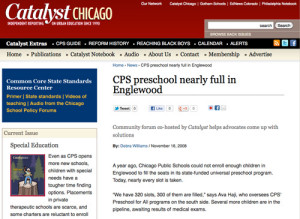 From in-person events and forums to customized content, Catalyst has baked engagement into all of its editorial efforts. Part of the effectiveness of its strategies stems from its focus on four target audiences: parents, educators, community leaders and policy makers.
From in-person events and forums to customized content, Catalyst has baked engagement into all of its editorial efforts. Part of the effectiveness of its strategies stems from its focus on four target audiences: parents, educators, community leaders and policy makers.
“We put together a package of products and services that we think will touch on the lives of those groups,” says Lenz. A quick sampling of Catalyst’s products includes:
- An in-depth quarterly publication of investigative reporting on education issues.
- A four-page newsletter for parents that is available in English and Spanish and reaches over 90,000 parents via distribution on report-card pickup day.
- Online news and content verticals that touch on specific topics, such as student achievement and reaching black boys.
“The largest percentage of online readers are teachers,” says Lenz. “Page views are really high on stories dealing with teacher contracts, issues and school closings.” - Public forums on a variety of issues, including teacher evaluations and better use of longer school days. According to Lenz, Catalyst has seen online registrations of “close to 300” for these forums.
Catalyst has also hired a Community Editor, who manages a number of tasks at the intersection of development, marketing and community engagement. While this role is still developing, Catalyst’s community editor works to boost engagement across all of Catalyst’s core audiences and content platforms, including in-person events and social media.





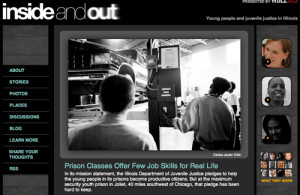
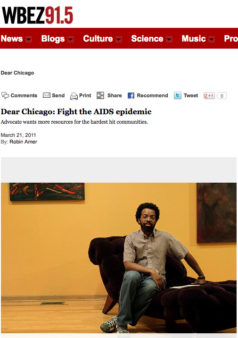 WBEZ also uses strategic partnerships with community organizations to drive programming and content creation. For
WBEZ also uses strategic partnerships with community organizations to drive programming and content creation. For 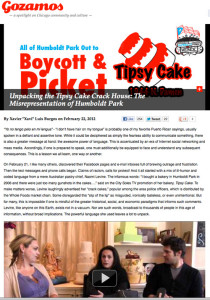 Six years ago, Naomi Levine, owner of a high-end pastry shop, had moved into Humboldt Park as part of an influx of people who were gentrifying a largely Puerto Rican community. After several years operating in the area, Levine moved her shop to another part of town. In early 2012, she commented in a videotaped interview about why she made the move: “I bought a bakery in Humboldt Park in 2006 and there were just too many gunshots in the cakes….”
Six years ago, Naomi Levine, owner of a high-end pastry shop, had moved into Humboldt Park as part of an influx of people who were gentrifying a largely Puerto Rican community. After several years operating in the area, Levine moved her shop to another part of town. In early 2012, she commented in a videotaped interview about why she made the move: “I bought a bakery in Humboldt Park in 2006 and there were just too many gunshots in the cakes….”
